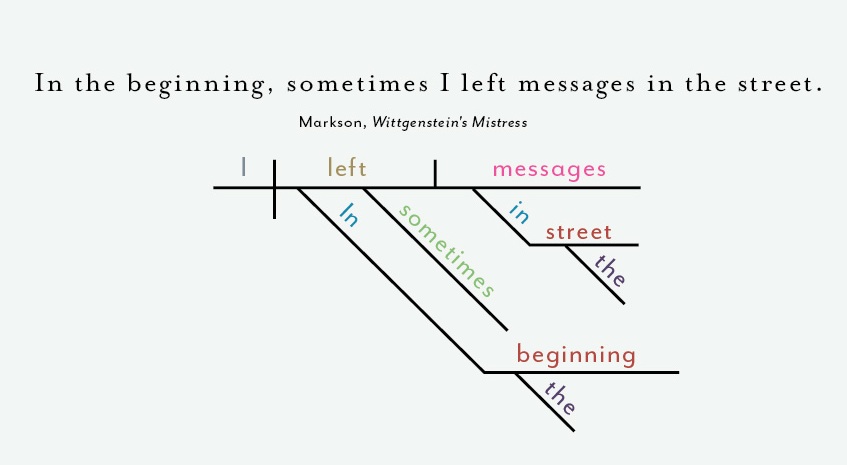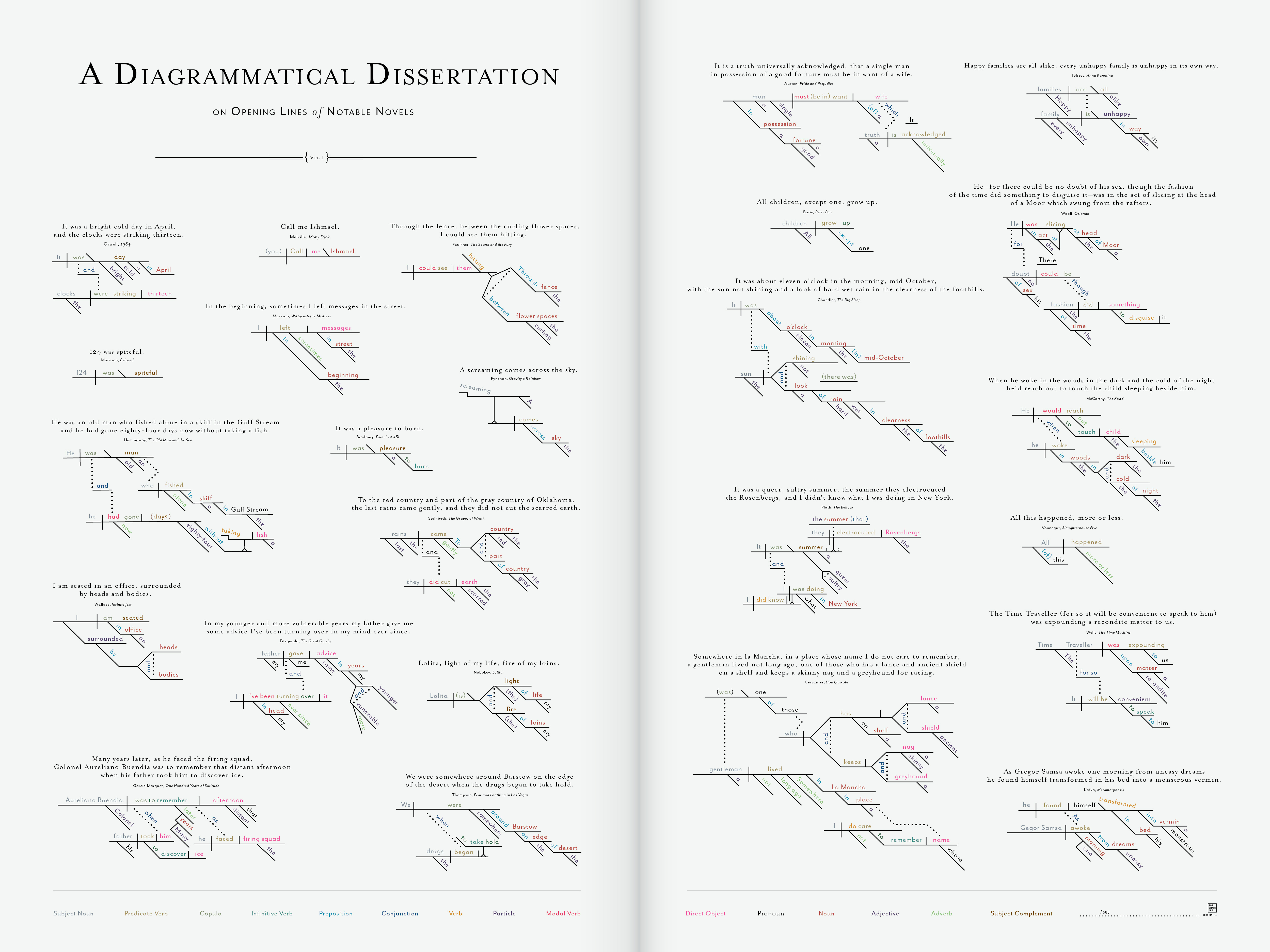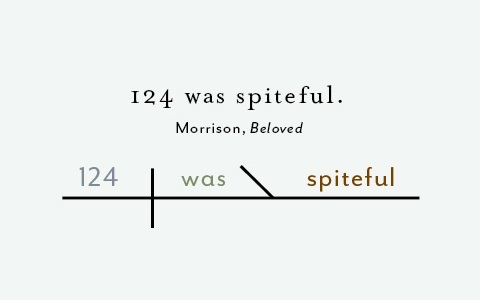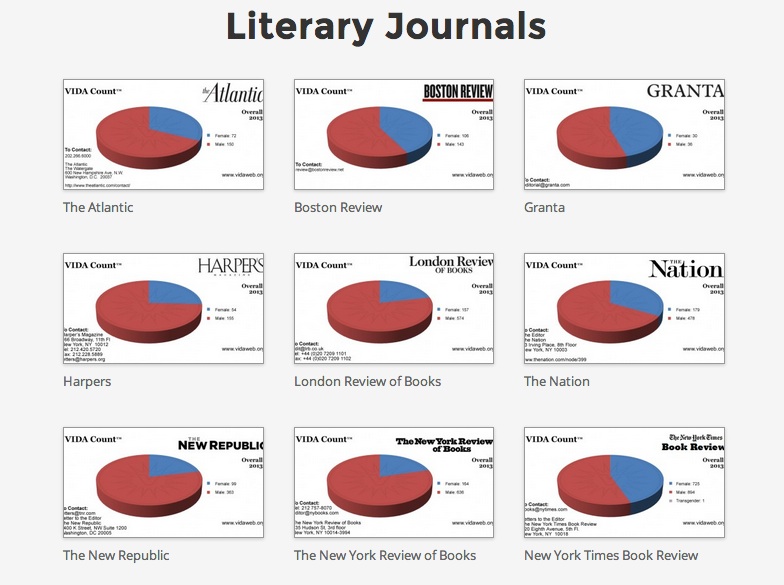
Cropped from image below
You know you’re a huge nerd when multiple people from various corners of your life all forward you the same link, and that link is a bunch of diagrammed sentences.
This snazzy, minimalist new print from "renowned" infographic artists Pop Chart Lab satisfies the demands of everyone's favorite niche demographic (all those grammar-fiends/”classic-literature”-snobs/data-visualization-enthusiasts/fans-of-quality-design in your life) to a T. But before you place your order, let’s take a closer look at what this “Diagrammatical Dissertation” actually visualizes.

Image via Esquire
Apart from the anti-feminist overtones of the Reed-Kellogg diagram schemata itself—which just reflect the gendered taxonomization of the English language (from whence do we derive concepts like objectification and subordination, exactly, if not from the rules that structure everything we say?)—this poster perpetuates all the standard inequalities we’ve come to expect from lists of “Notable Novels.” Of the 25 opening sentences the poster presents, four were written by female authors (a whopping 16%). One black author makes the cut, Toni Morrison. 13 have male subjects or refer to male characters; only 4 of the sentences contain female characters or narrators (and in one of these the female appears as “fire of my loins” w/r/t the male narrator, so that probably shouldn't even count). Only two women are their sentence's subjects; seven male subjects voice their own sentences. It barely needs to be said that none of these sentences come from openly queer writers.

Cropped from image above
I know what you’re thinking. "This isn’t news, yo! It’s just a reflection of literary history. More men historically wrote and published novels, and more novels have been published about men, therefore any chart would demonstrate this inequity! And besides, they're talking about classics. When reading or penning a classic, race and gender magically disappear. Right?!"
Wrong. Here's (one of) the (many) problem(s), provided for us in the poster maker's own humble description of his or her (but in all likelihood his) product:
This chart diagrams 25 famous opening lines from revered works of fiction according to the dictates of the classic Reed-Kellogg system. From Cervantes to Faulkner to Pynchon, each sentence has been painstakingly curated and diagrammed by PCL's research team, parsing classical prose by parts of speech and offering a partitioned, color-coded picto-grammatical representation of some of the most famous first words in literary history. Whether you’re a book buff, an English teacher, or a hard-line grammarian, this diagrammatical dissertation has something for the aesthete in all of us.
Gross. This chart offers its list as a set of “famous,” “revered,” “curated,” “most famous in literary history” works for “the aesthete in all of us.” All of whom, might I ask? And talk about range! It covers "Cervantes to Faulkner to Pynchon"—and all the straight euro/anglo male novelists in between. The problem with using words like "notable" and "classic" to describe a set of authors that is 96% male and/or European by origin in 2014 is (duh) that it simply perpetuates the idea that some literature is more important than other kinds; and that most of the "important" books EVER have been written by or about (straight) men. To which I say, uh, nope.
Like the Buzzfeed quizzes I mentioned a few weeks back, curation has ossifying powers. Every time I see a new list of “best books,” which is what this actually amounts to, the same ugly old narrative about who sets the cultural bar rears its representational head. And it isn’t any surprise, is it? Just take a look at the latest VIDA statistics: we’re STILL publishing an average of 75% male authors in the most read magazines in the US for nonfiction and fiction ("Drumroll for the 75%ers: The Atlantic, London Review of Books, New Republic, The Nation, New York Review of Books (actually holding steady at 80% men for four years) and New Yorker"). Mainstream book reviews have always skewed overwhelmingly toward books written by men. In words from Cate Blanchett's controversial acceptance speech at last week’s Oscars, “The world is round, people.”

Image via VIDA count 2013
And maybe, just maybe, if this much-tweeted-and-"liked" and temporarily back-ordered diagram had included a more varied group of authors and texts, it wouldn’t be basically all direct objects and strings of subordinate clauses—that one was for you, feminist grammar nerds. Is it any surprise that the only sentence on the chart that neither takes an object nor subordinates a clause is the opening to Beloved, “124 was spiteful”? Subject noun + copula + subject complement = simply exquisite.




Recent comments
2 years 29 weeks ago
2 years 44 weeks ago
2 years 44 weeks ago
2 years 50 weeks ago
3 years 4 weeks ago
3 years 4 weeks ago
3 years 4 weeks ago
3 years 6 weeks ago
3 years 6 weeks ago
3 years 6 weeks ago